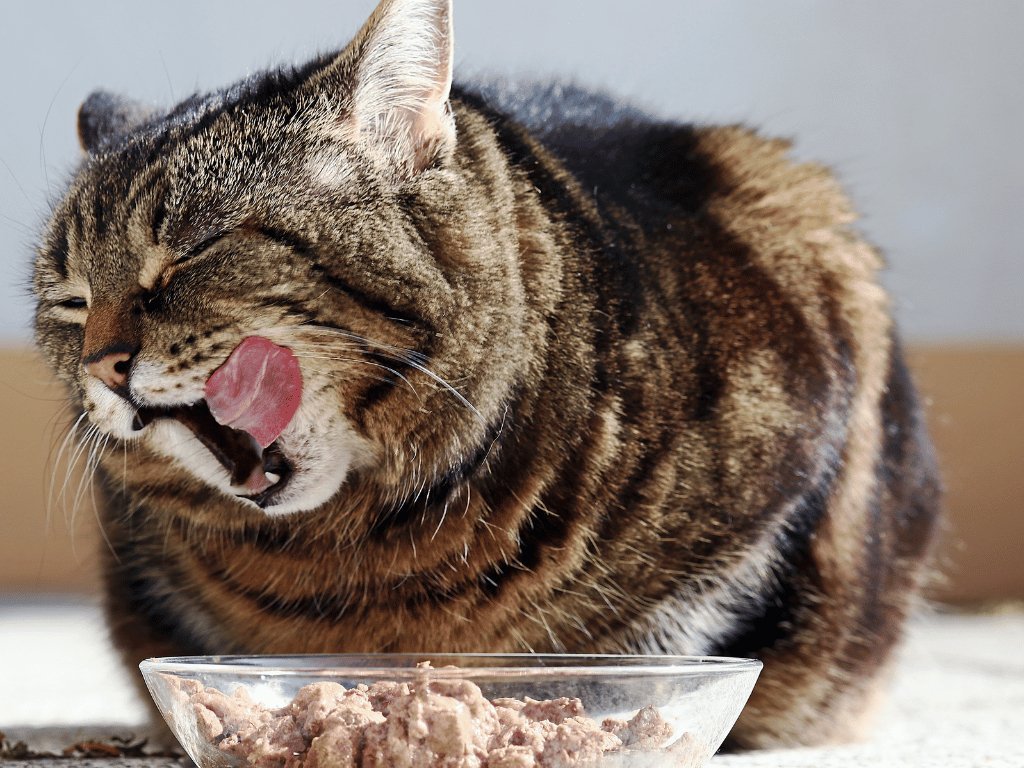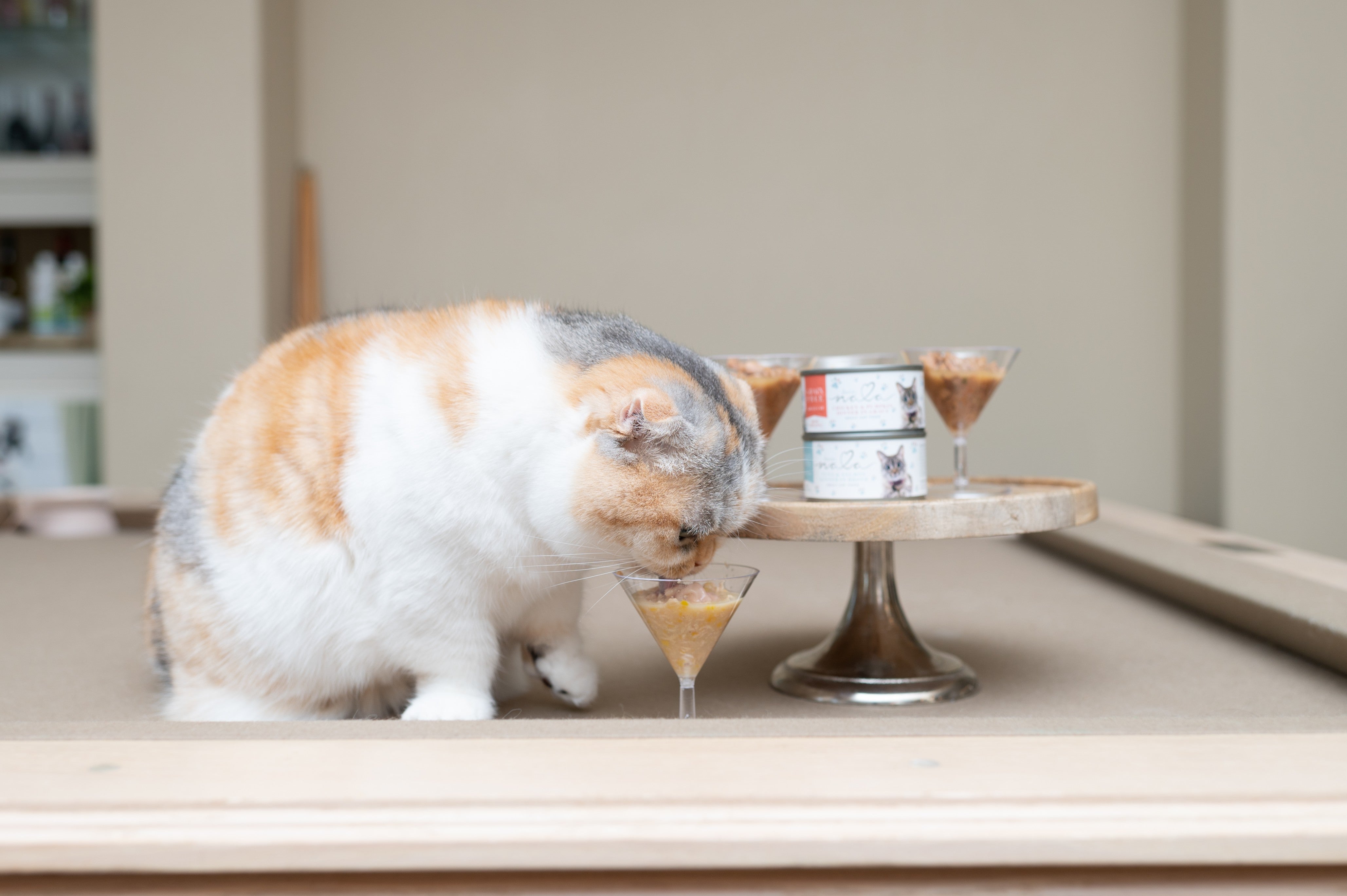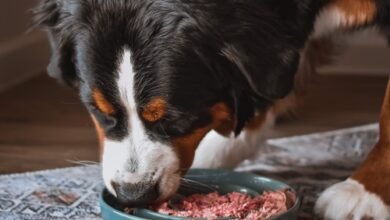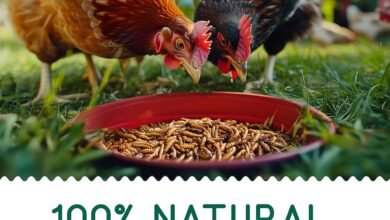
Cat food is specifically formulated to meet the nutritional needs of cats. It provides the necessary nutrients for their growth and overall health.
Understanding Your Cat’s Nutritional Needs
Your cat’s nutritional needs are different from yours. While you may be tempted to share your food with them, it’s important to understand that what’s suitable for humans may not be ideal for cats. Their bodies have specific dietary requirements that must be met to ensure their overall health and well-being.
Differentiating Between A Cat’s Dietary Requirements And Human Food Preferences
Cats are obligate carnivores, meaning they require a diet primarily based on animal protein. Unlike humans, they lack the enzyme necessary to break down plant matter efficiently. This is why it’s crucial to provide them with nutritionally-balanced cat food that includes high-quality protein from animal sources.
Feeding your cat a diet solely based on human food or plant-based ingredients can lead to nutrient deficiencies and health problems, such as poor coat quality, weakened immune system, and digestive issues.
Here are some key differences between a cat’s dietary requirements and human food preferences:
| Cat’s Dietary Requirements | Human Food Preferences |
|---|---|
| Animal-based protein | Wide variety of protein sources including plant-based options |
| High fat content | Lower fat content depending on dietary preferences |
| Essential amino acids like taurine | No specific requirements for essential amino acids |
| Vitamin A from animal sources | Vitamin A from plant-based sources like fruits and vegetables |
Ensuring Your Cat’s Nutritional Needs Are Met
Providing your cat with a balanced and nutritious diet is important for their overall health. Here are some tips to ensure your cat’s nutritional needs are met:
- Choose high-quality cat food: Look for cat food that is labeled as nutritionally complete and balanced. It should contain the essential nutrients your cat needs, such as high-quality protein, essential fatty acids, vitamins, and minerals.
- Read the ingredients list: Avoid cat foods with excessive fillers, artificial preservatives, and by-products. Look for real meat as the first ingredient and ensure that the food meets the nutritional requirements set by reputable organizations like the Association of American Feed Control Officials (AAFCO).
- Consider your cat’s age and health: Kittens, adult cats, and senior cats have different nutritional needs. Additionally, if your cat has any specific health concerns, such as allergies or urinary tract issues, consult with your veterinarian for specialized diet recommendations.
- Monitor your cat’s weight: Obesity is a common health issue in cats. Ensure you’re feeding your cat the right portion sizes and consult your vet if you notice any weight-related concerns.
- Provide access to fresh water: Cats require fresh, clean water at all times. Ensure your cat has access to a clean water source and remember to change it regularly.
By understanding your cat’s nutritional needs and providing them with appropriate cat food, you can help ensure they live a healthy and happy life.
The Basics Of Cat Food
When it comes to the health and well-being of your feline friend, providing a proper diet is essential. Just like humans, cats need a balanced and complete diet to live a happy and healthy life. In this article, we will examine the essential components of a complete and balanced diet for cats, ensuring their nutritional needs are met.
Examining The Essential Components Of A Complete And Balanced Diet For Cats
A complete and balanced diet for cats consists of various essential components. These components ensure that your cat receives all the necessary nutrients, vitamins, and minerals required for optimal health. Let’s take a closer look at each of these components:
1. Protein
Protein is a vital component of a cat’s diet. It helps build and repair tissues, supports growth, and contributes to a healthy immune system. It is important to choose cat food that has high-quality animal-based protein sources, such as chicken, turkey, or fish. Avoid products that list grains or by-products as the primary source of protein.
2. Carbohydrates
While cats are obligate carnivores and primarily obtain their energy from protein, they still require a small amount of carbohydrates. Carbohydrates provide energy and are a source of fiber, aiding in digestion. Look for cat food that contains easily digestible carbohydrates like brown rice or sweet potatoes.
3. Fats
Healthy fats are an important part of a cat’s diet as they provide energy, help absorb fat-soluble vitamins, and support healthy skin and coat. Look for cat food that includes sources of omega-3 and omega-6 fatty acids, such as fish oil or flaxseed oil.
4. Vitamins And Minerals
Just like humans, cats require essential vitamins and minerals to maintain overall health. These include vitamins A, D, E, and B-complex vitamins, as well as minerals like calcium, phosphorus, and magnesium. A well-balanced cat food will provide these essential nutrients, ensuring your cat’s nutritional needs are met.
5. Water
Water is an often overlooked but crucial component of a cat’s diet. Cats have a low thirst drive and may not drink enough water, which can lead to dehydration and urinary issues. Wet cat food or providing a water source nearby can help ensure your cat stays hydrated.
By prioritizing these essential components in your cat’s diet, you can ensure that they receive a complete and balanced nutrition. Remember to consider your cat’s age, activity level, and any specific dietary requirements when selecting the right cat food for them. Providing proper nutrition will support their overall health and well-being.
Choosing The Right Cat Food
Choosing the Right Cat Food
When it comes to keeping our feline friends healthy and happy, choosing the right cat food is crucial. A well-balanced diet plays a pivotal role in maintaining their overall well-being and ensuring they get the essential nutrients they need. However, with so many options available on the market, selecting the right cat food can be overwhelming for pet owners. In this article, we will explore the key factors to consider when selecting cat food based on age, breed, and health condition.
Factors To Consider When Selecting Cat Food Based On Age, Breed, And Health Condition
Just like people, cats have different nutritional needs throughout their life stages. Considering your cat’s age, breed, and health condition can help in making an informed decision about their diet.
Nutritional Requirements For Kittens, Adult Cats, And Seniors
Kittens, adult cats, and seniors have unique nutritional requirements. While kittens require food that supports their rapid growth and development, adult cats need a balanced diet to maintain their ideal weight and overall health. On the other hand, seniors may benefit from food designed to support aging joints and help manage weight. Here’s a breakdown of their nutritional needs:
| Life Stage | Nutritional Requirements |
|---|---|
| Kittens |
|
| Adult Cats |
|
| Seniors |
|
Breed-specific Dietary Considerations
Did you know that different cat breeds may have specific dietary considerations? Some breeds are prone to certain health issues, such as urinary tract problems or food allergies. Therefore, it’s important to be aware of your cat’s breed-specific needs when selecting their food. Consulting with your veterinarian can help determine if there are any specific dietary guidelines you should follow.
Specialized Diets For Cats With Health Issues
Cats with health issues, such as kidney disease, diabetes, or allergies, may benefit from specialized diets tailored to their specific conditions. These diets are formulated to support their overall health and manage their unique dietary requirements. If your cat has a health issue, it’s crucial to work closely with your veterinarian to determine the best diet plan for them.
In conclusion, when it comes to choosing the right cat food, considering your cat’s age, breed, and health condition is essential. Understanding their nutritional needs based on their life stage and any specific issues they may have can help ensure they receive the optimal nutrition they need to thrive.
Decoding Cat Food Labels
Understanding The Information Provided On Cat Food Packaging
Decoding cat food labels can feel like unraveling a mystery. With so many brands and types of cat food available, it’s important to understand what the packaging is telling us before making a choice for our feline companions. By taking a closer look at the information provided, we can make informed decisions about the quality and suitability of a particular cat food.
Analyzing Ingredient Lists And Nutritional Value
One of the most critical aspects of decoding cat food labels is analyzing the ingredient list and nutritional value. The ingredient list gives us valuable insight into what goes into the cat food and can help us evaluate its quality. Look for specific animal protein sources like chicken, fish, or turkey as the main ingredient, as cats are obligate carnivores and require a meat-based diet. Avoid foods with vague or generic terms like “meat by-products” or “animal digest” as these may contain low-quality or unidentified ingredients.
It’s also important to pay attention to the nutritional value of the cat food. The packaging typically provides information about the guaranteed analysis, which includes the minimum percentages of crude protein and fat, as well as the maximum percentages of crude fiber and moisture. These values give us an idea of the overall nutrient content of the food. Additionally, check for essential nutrients like taurine, omega-3 fatty acids, and vitamins that are crucial for a cat’s health.
Recognizing Misleading Marketing Claims
Marketing claims on cat food packaging can sometimes be misleading, making it crucial to be able to recognize them. Phrases such as “natural,” “holistic,” or “premium” are often used to imply high quality, but they are not regulated terms and can be used on products with questionable ingredients. Keep in mind that the proof of a food’s quality lies in its ingredient list and nutritional value, rather than catchy marketing buzzwords.
Another common misleading claim is the use of images of fresh ingredients on the packaging that may not reflect the actual composition of the food inside. Always rely on the ingredient list for an accurate understanding of what’s in the cat food, rather than the pictures or marketing materials on the packaging.
By understanding the information on cat food packaging, analyzing ingredient lists and nutritional value, and recognizing misleading marketing claims, we can make more informed decisions about the cat food we choose. Taking the time to decode cat food labels ensures that our feline friends receive the nourishment they need for a healthy and happy life.
Wet Food Vs. Dry Food: Which Is Better?
When it comes to choosing cat food, one common dilemma pet owners face is whether to go with wet food or dry food. Both options have their pros and cons, and understanding the differences can help you make the best choice for your feline friend. In this article, we will compare the benefits and drawbacks of wet and dry cat food options, as well as discuss the considerations for hydration and urinary tract health, and the implications for dental health.
Comparing The Benefits And Drawbacks Of Wet And Dry Cat Food Options
Let’s break down the advantages and disadvantages of wet food and dry food for cats:
Wet Food
- Hydration: Wet cat food contains a higher moisture content, which can be beneficial for cats who struggle to drink enough water. It helps to keep your cat hydrated and supports overall urinary tract health.
- Palatability: Cats are often drawn to the rich aromas and flavors of wet food, making it an enticing option for picky eaters.
- Digestibility: The moist texture of wet food is easier for cats to chew and digest, especially for those with dental issues or older cats who may have trouble with dry kibble.
- Cost: Wet cat food tends to be more expensive than dry food, as it contains higher quality ingredients and requires careful packaging to maintain freshness.
Dry Food
- Dental Health: The crunchy texture of dry cat food can help to scrape off plaque and tartar on your cat’s teeth, promoting better oral health. Chewing on dry kibble stimulates saliva production, which can also aid in reducing dental issues.
- Convenience: Dry cat food is easy to store and has a longer shelf life compared to wet food. It doesn’t spoil as quickly and doesn’t need to be refrigerated, making it a convenient option for busy pet owners.
- Affordability: Dry cat food tends to be more cost-effective than wet food, making it a budget-friendly choice for pet owners.
- Portion Control: Dry food is easier to measure and control portion sizes, which can be helpful for cats prone to weight gain or obesity issues.
Hydration And Urinary Tract Health Considerations
Ensuring your cat stays hydrated is vital for their overall health, especially in maintaining a healthy urinary tract. Wet cat food can provide additional hydration due to its higher moisture content, helping to prevent issues like urinary tract infections and crystals in the bladder. However, if your cat mainly consumes dry food, make sure they have constant access to fresh water and consider adding wet food as a supplement to their diet.
Dental Health Implications
Keeping your cat’s teeth clean and healthy is crucial for their well-being. While dry cat food has its advantages in promoting dental health, it is essential to note that it should not be the sole method of maintaining dental hygiene. Regular teeth brushing, dental treats, and dental check-ups with your veterinarian are also crucial for maintaining proper oral health in cats.
Homecooked And Raw Food Diets For Cats
Introductory Paragraph
When it comes to choosing the right diet for our feline friends, considerations for their health and well-being are of utmost importance. Homecooked and raw food diets have gained popularity among cat owners who seek more control over the ingredients and quality of their pets’ meals. In this article, we will explore the pros and cons of preparing homemade or raw food for your cat, and discuss how to ensure nutritional balance without relying solely on commercial products. Additionally, we will address potential risks and safety concerns associated with these alternative diets, so you can make an informed decision about what’s best for your beloved pet.
H3: Exploring the pros and cons of preparing homemade or raw food for your cat
Exploring The Pros And Cons Of Preparing Homemade Or Raw Food For Your Cat
Preparing homemade or raw food for your cat has its own set of advantages and disadvantages. Let’s take a closer look at both sides of the coin.
Pros and Cons Table
| Pros | Cons |
|---|---|
|
|
While preparing homemade or raw food for your cat allows you to have control over the ingredients and avoid potentially harmful additives and preservatives, it also demands time and effort on your part. Ensuring a nutritionally balanced diet is crucial, as cats have specific dietary requirements that need to be met for optimal health. Without proper planning, homemade or raw food diets may lack certain essential nutrients, which can be detrimental to your cat’s overall well-being.
H3: Ensuring nutritional balance without commercial products
Ensuring Nutritional Balance Without Commercial Products
To ensure that your cat’s homemade or raw food diet meets their nutritional needs without relying on commercial products, it’s essential to carefully consider their dietary requirements and make informed decisions.
- Consult with a veterinarian: Seek professional guidance to understand your cat’s specific nutritional needs and any potential health issues that may affect their diet.
- Research feline dietary requirements: Familiarize yourself with the essential nutrients, such as protein, fats, vitamins, and minerals, that cats need to thrive.
- Supplement if necessary: If your homemade or raw food recipe falls short of certain nutrients, consult with your vet about appropriate supplements to maintain a balanced diet.
- Monitor your cat’s health: Regularly assess your cat’s overall health and well-being to ensure that their dietary needs are being met. Any concerns should be addressed with your veterinarian.
H3: Potential risks and safety concerns
Potential Risks And Safety Concerns
While homemade or raw food diets for cats can offer benefits, it’s important to be aware of potential risks and safety concerns associated with these alternative approaches.
- Risk of nutrient imbalances: Without careful planning and supplementation, homemade or raw food diets can lead to nutrient deficiencies or excesses.
- Potential bacterial contamination: Raw food may contain harmful bacteria that can pose health risks to both cats and their owners. Proper food handling and hygiene practices are crucial to minimize these risks.
- Increased sensitivity to foodborne pathogens: Some cats may have a higher susceptibility to foodborne illnesses compared to others, making it important to monitor their health and consult with a veterinarian if any concerns arise.
By being mindful of these potential risks and safety concerns, and taking necessary precautions, you can mitigate the potential drawbacks of homemade or raw food diets for your cats and provide them with a safe and balanced meal.

Credit: www.lovenala.com
Frequently Asked Questions On Cat Food
Can Cats Eat Dog Food?
Cats should not eat dog food as it lacks essential nutrients that are specific to cats. Dog food is formulated with different proportions of nutrients, such as protein and taurine, which are vital for a cat’s health. Feeding cats dog food can lead to nutritional deficiencies and health issues.
It’s best to stick to cat food designed specifically for their dietary needs.
How Much Food Should I Feed My Cat?
The amount of food to feed your cat depends on various factors, including their age, weight, activity level, and health. Generally, cats need to be fed a specific portion size based on their body weight and the type of food they are consuming.
It is recommended to consult with your vet to determine the appropriate serving size and feeding schedule for your cat.
Can Cats Eat Raw Meat?
Cats are obligate carnivores and can eat raw meat. However, it is essential to ensure the meat is fresh, of high quality, and prepared correctly to avoid any potential health risks for both the cat and humans. Raw meat diets can be nutritionally balanced, but it’s crucial to consult with a veterinarian or veterinary nutritionist to ensure your cat’s specific dietary needs are met.
Conclusion
To sum up, ensuring you provide your furry friend with the right type of cat food is crucial for their well-being. By understanding their specific nutritional needs and selecting high-quality options, you can promote their overall health and longevity. With a wide range of options available, it’s essential to pick cat food that suits their age, size, and dietary requirements.
Remember, a happy and healthy cat starts with the right nourishment!



